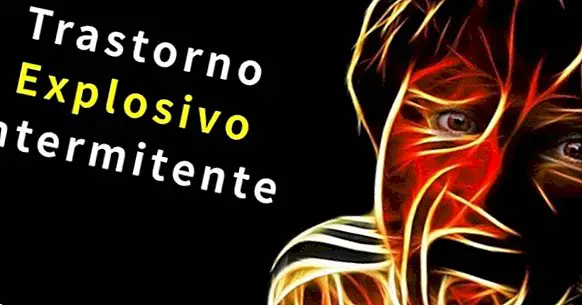Intermittent explosive disorder: causes and symptoms
Our emotional state is an area of our psychological life that, in many cases, is revealed as something beyond our control. This has positive consequences, other negative ones, and some that have to do with risks when certain types of mental disorders occur .
For example, thanks to feelings and emotions we can live intensely all kinds of moments, quickly learn about the positive and negative consequences of our actions and even achieve better communication with others, but sometimes, some biological alterations can make that our emotional reactions are excessive or even that they are out of place.
Intermittent explosive disorder (IED) is a clear example of this , although in these cases the person diagnosed with this type of disorder sees their quality of life significantly limited by this mental disorder.
- Maybe you're interested: "The 16 most common mental disorders"
What is intermittent explosive disorder?
Along with pyromania, trichotillomania, pathological gambling and many other disorders, the intermittent explosive disorder is part of what in the DSM-V diagnostic manual is known as impulse control disorders. In short, it is characterized by expressing itself through sudden and relatively brief outbursts of violence , triggered by minimally frustrating or stressful situations, and that can not be explained by the consumption of substances or injuries.
People with TEI have a very low threshold of frustration and any setback, however insignificant it may seem, makes them suddenly angry, even though seconds before they were in a good mood and laughing. Throughout these brief episodes of anger, which do not usually last more than an hour, the person partially or totally loses control over their behavior and in many cases can physically or verbally attack people who are nearby.
Once the outburst of fury has passed, people with intermittent explosive disorder tend to realize for themselves that what they have done has been detrimental to others, and they often feel guilty.
symptom
The symptoms of intermittent explosive disorder vary a bit according to the diagnostic manual used as a reference, but are mainly based on the appearance of short explosions of anger, expressed through physical or verbal violence , which are disproportionate to the magnitude of their causes and entail a loss of control.
As anger appears without premeditation, it is often expressed by interrupting a positive state of mind, and violence has no instrumental purpose. The person who presents the symptoms of intermittent explosive disorder does not aspire to achieve goals through aggression, but these are the result of their altered mood, which can not be attributed either to the consumption of substances or to the existence of other disorders or deformed or damaged parts of your nervous system.
A) Yes, People with TEI can get into a rage in a matter of seconds when interpreting that someone is looking at them too much , or when you see that a product that you have ordered in a store has been used up, or when you accidentally break an item. Outbreaks of anger can appear in a variety of situations, but they all have something in common: they would not be a source of intense anger for the vast majority of the population.
As with all disorders, only certain mental health professionals can make a diagnosis of intermittent explosive disorder, almost always using a DSM manual.
Other similar disorders
The TEI is closely related to bipolar disorder, which is hypothesized to be an early phase. In bipolar disorder, the moments of mania and euphoria may resemble the explosion of intense emotions that occur in intermittent explosive disorder.
However, the difference between both types of alterations is, basically, that in the intermittent explosive disorder the outbursts of fury can appear at any time , while in bipolar disorder these are linked to episodes of mania or depression, moments in which the mood was already altered before.
With regard to antisocial personality disorder, in which outbreaks of violence are also common, in these cases it plays an instrumental role, so that a specific purpose can be identified, while in TEI there is no objective clear beyond behaviorally expressing the state of agitation and frustration in which the person finds himself.
Treatment of intermittent explosive disorder
As it is a mental disorder that can not be linked to drugs or injuries but has to do with the way in which networks of neurons interact with each other and with environmental stimuli, the TEI can not be trying to intervene on a single factor in particular , as if to heal a wound. Therefore, in these cases the intervention is usually a combination between cognitive-behavioral therapy and administration of psychotropic drugs (normally, mood stabilizers and / or antidepressants).
Psychotherapy is usually very helpful in recognizing the first manifestations of outbreaks of anger, executing plans to increase the level of control over behavior and preventing others from being harmed, and developing coping strategies against the feeling of guilt and feeling of sadness In this way, patients learn to follow certain protocols when they begin to notice the first symptoms of a crisis induced by intermittent explosive disorder, and learn to regulate their behavior and their ideas about what is happening in a way that reduces discomfort as much as possible. in them as in the others.
Bibliographic references:
- Beck, A.T. and Freeman, A. (1995). Cognitive therapy of personality disorders. Barcelona: Paidós.
- Goodman, H.H. (Ed.). (1987). General psychiatry Mexico: The Modern Manual. (Orig. 1984).
- Jaspers, K. (1946/1993). General Psychopathology. Mexico: FCE.



















